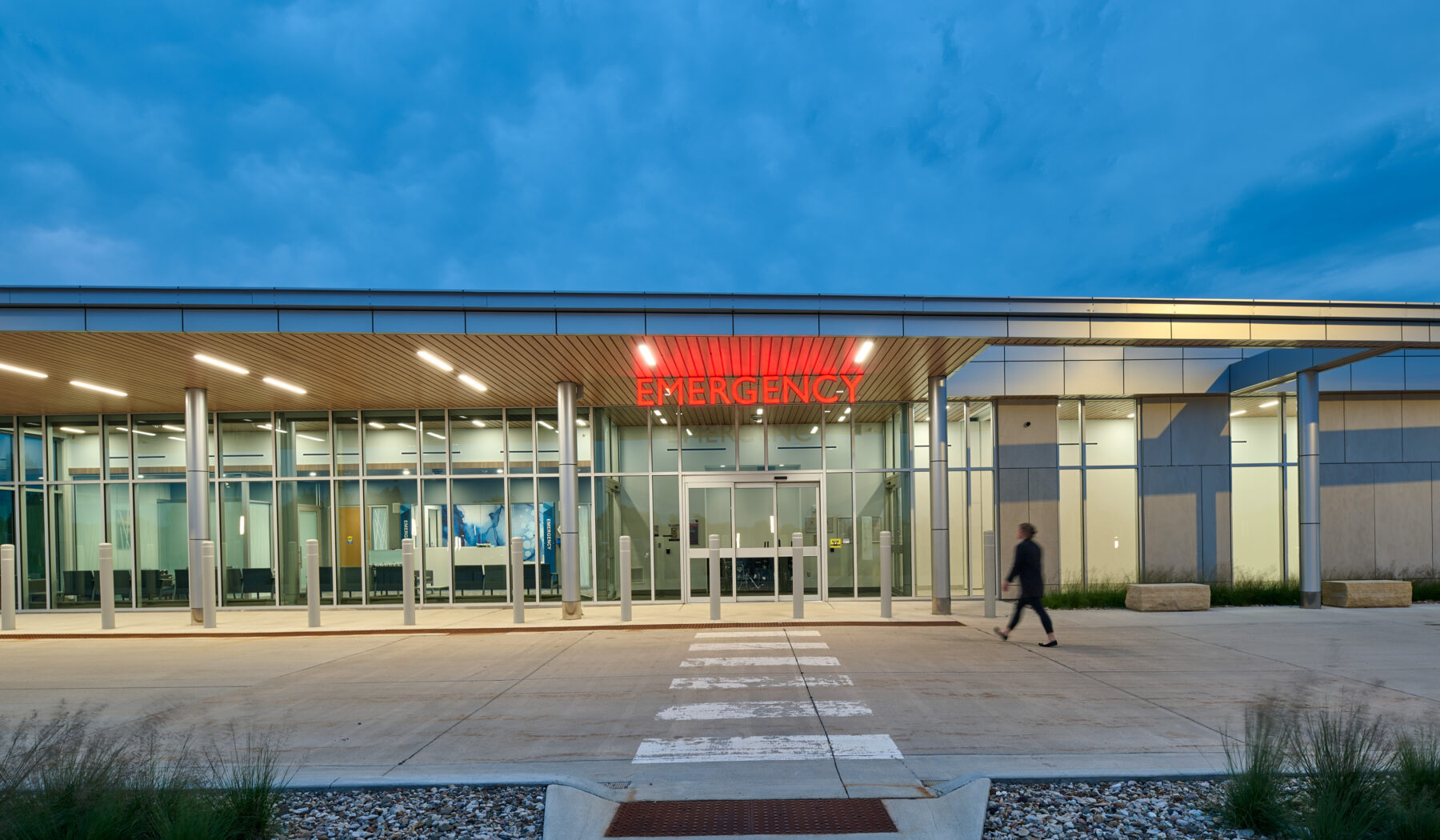
The month of May is bursting with appreciation for our incredible healthcare heroes! Between National Nurses Week and National Hospital Week, it’s the perfect time to celebrate the people who keep us healthy. In honor of healthcare professionals’ tireless dedication, we asked three INVISION healthcare designers to share one thing to consider when designing hospital spaces for staff.
Pavithra Wettasinghe | Project Coordinator

When designing any space, it is always important to consider who the users are and how the space gets utilized. The design of a hospital can help or hinder the natural flow of how healthcare professionals move throughout the facility. Nurses have a high burnout rate. They work in a fast-paced, often high-stress environment. Therefore, when designing spaces for nurses, thoughtful decisions should be made to ease their mental and physical workload. Nurses can walk more than four miles every shift. Optimizing walkability and proximity to materials, equipment, services, and patients ease the strain on nurses.
Our team analyzes travel distances from nurse stations early in the design process to help nurses spend less time navigating the facility and more time providing care. When I was working on the Waverly Health Center project, our team designed each department using a “racetrack” layout. That means all corridors loop around a centrally located nurse station and other staff support spaces, while patient rooms are placed around the perimeter. This looping corridor system makes navigation between staff to patient areas very efficient. The strategic placement of the nurse station, surrounded by glass partitions, provides high visibility and accessibility to patients. This design enables nurses to monitor multiple rooms from a single location, leading to quicker response times during emergencies. The layout of a hospital is a crucial element that significantly impacts the workflow of healthcare professionals.
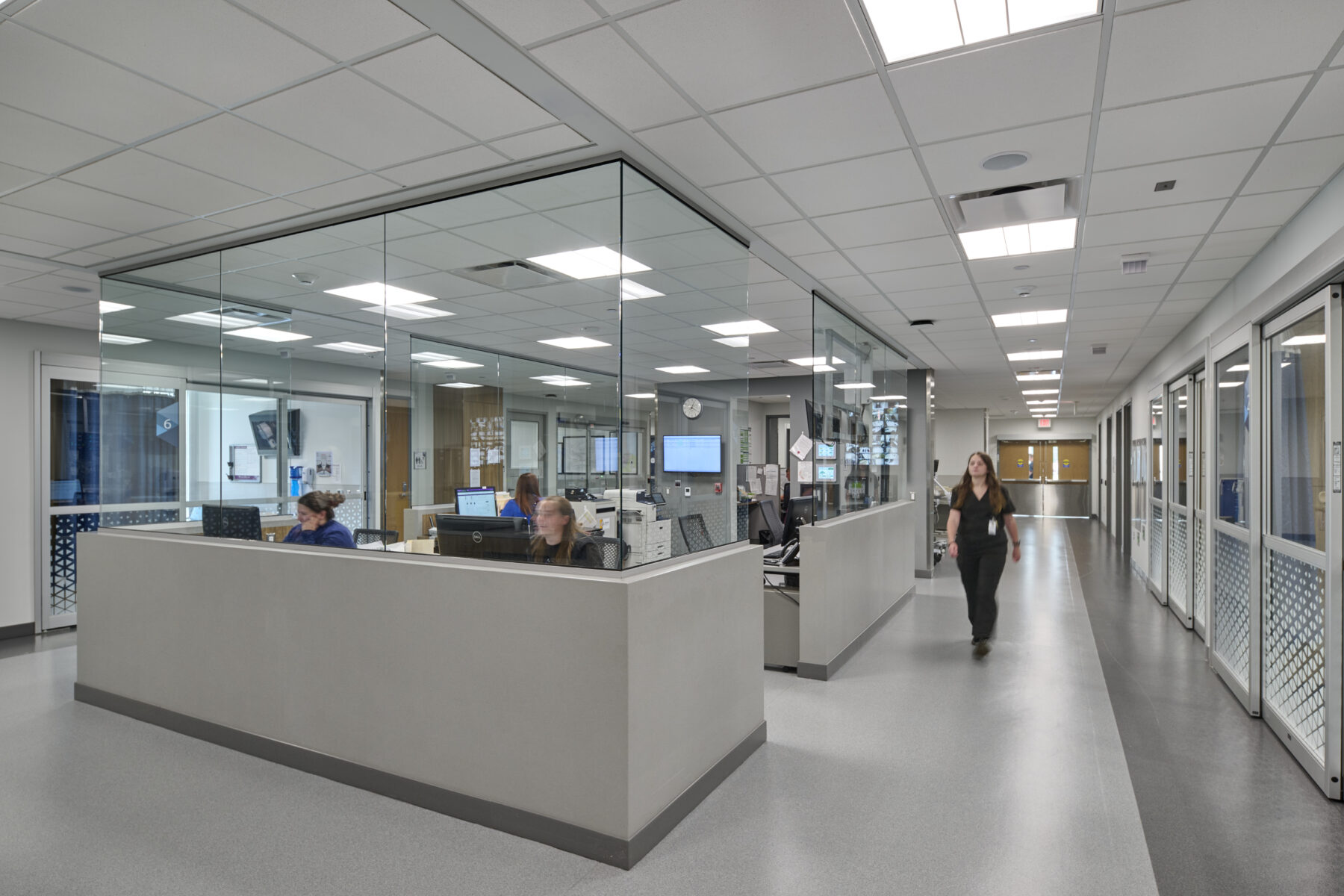
Waverly Health Center | Nurse Station
Shannon Swift, AIA, WELL AP | Senior Associate, Architect
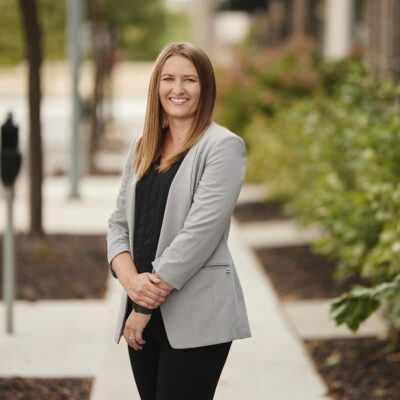
Healthcare professionals work in collaboration with many departments to ensure patients receive comprehensive care. Depending on the reason for the visit, each patient may see multiple nurses, physician assistants, and medical students. Additionally, they may visit lab technicians, pharmacists, or other specialists. Providing places for collaboration ensures these professionals can communicate across departments and work together to reach decisions about patient care plans.
A great example of this is the MercyOne Richard Deming Cancer Center. The care team area includes open nurse stations overlooking exam hallways with a private central team room. The team room is surrounded by frosted glass and sliding doors, allowing for open communication with others or the ability to close it off for private conversations. A large circular table and seating in that area provide a quick touch-down collaborative space for providers and nurses. Larger conference rooms in the clinic can also be utilized for bigger group meetings. Both spaces have televisions for information sharing or to connect with virtual participants.
By designing these rooms with different sizes, layouts, and technology, healthcare professionals can choose the best space for their needs. This flexibility helps them collaborate more effectively on what they need to accomplish. Providing hospital staff with areas to collaborate on patient care improves communication between departments and ensures the patient receives the best quality of care.
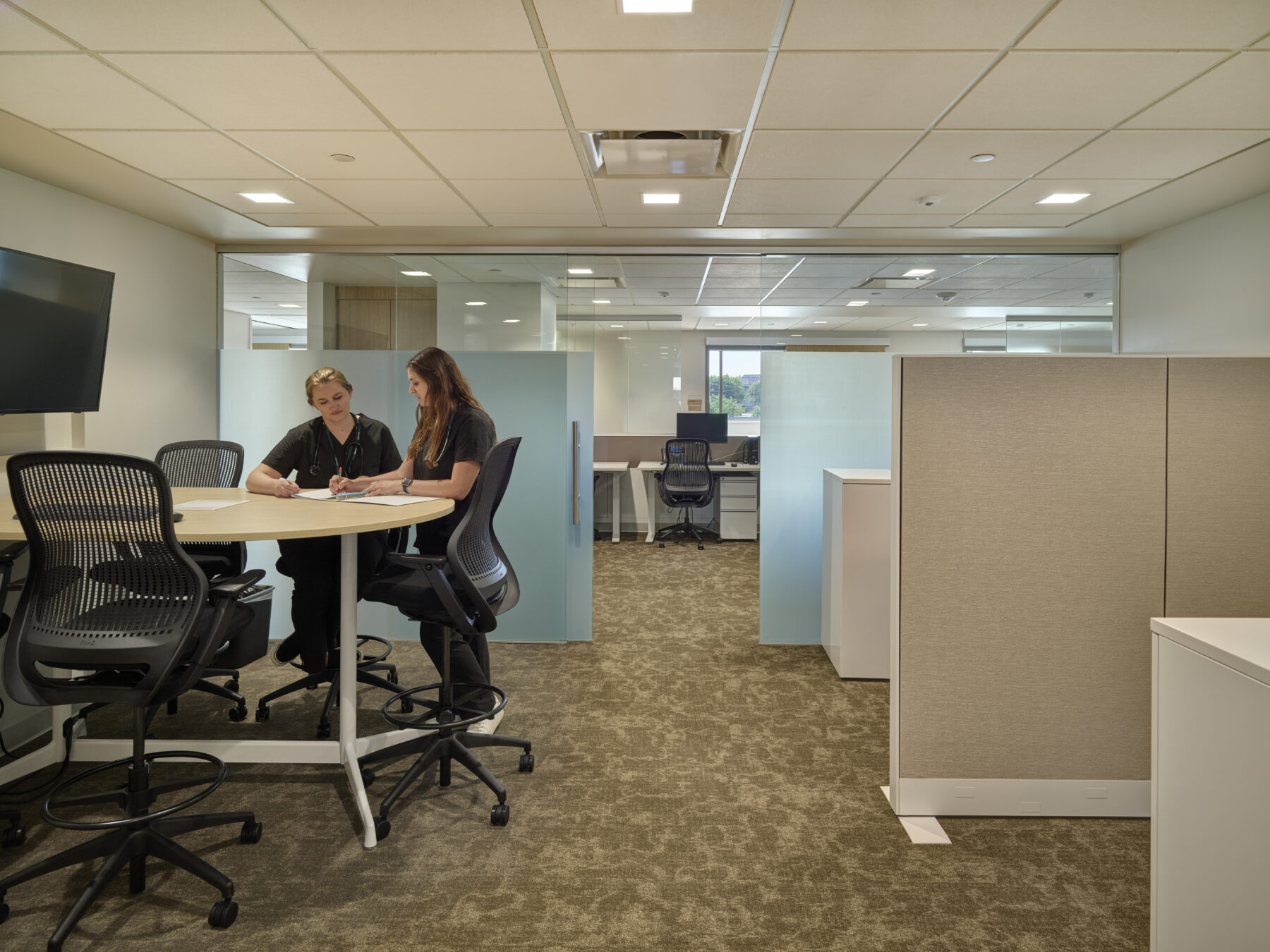
MercyOne Des Moines Richard Deming Cancer | Team Room
Maggie Watkins, AIA, WELL AP | Senior Associate, Architect
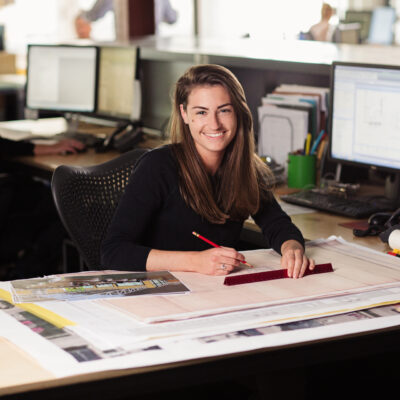
When designing within any health and wellness space, especially hospitals, technological considerations should be a part of the conversation. Technology plays a large role in patient health and safety, providing staff with security and knowledge to do their jobs more effectively.
At Buchanan County Health Center’s new inpatient addition, we plan to provide digital signage and digital patient boards in all ten inpatient rooms. These will be placed outside and inside the rooms, annotating a patient’s special needs. Outside the room, this evolving device will alert staff to concerns while protecting the identity of the patient from visitors. Inside the room, the easily interchangeable screen affords transparency to the patient and family while preparing new staff at shift change with accurate and up-to-date information. These tools provide comfort and convenience for the patients and the healthcare professionals providing care.
Portable monitoring equipment saves time from physically making rounds to check on patients. When hospital staff have access to portable devices, their mobility throughout the facility increases along with their productivity. Handheld devices give additional flexibility to healthcare staff. These mechanisms can send alerts with real-time updates on their patients for lab results, prescriptions, changes in care, etc.
Mobile tools in healthcare facilities also improve the flow of communication throughout the facility. This technology empowers hospital staff to act swiftly. With a few clicks, they can consult with specialists across departments, retrieve crucial documents instantly, and receive immediate alerts for any medical emergencies. Prioritizing the use of technology in healthcare facilities streamlines the job of healthcare professionals, creating a more successful wholesale. This ultimately improves the quality of care provided to patients and lessens the workload on staff.
Designing hospital spaces involves countless decisions that significantly impact hospital staff. Creating these environments to support how hospital staff work, communicate, and navigate the facility is so important. It brings our architects and designers great joy to craft healthcare spaces that ease the workload and strain on hospital staff. This May and every day, we are grateful for the healthcare heroes who keep us healthy and happy. Their tireless dedication keeps us committed to creating designs that support their vital work.